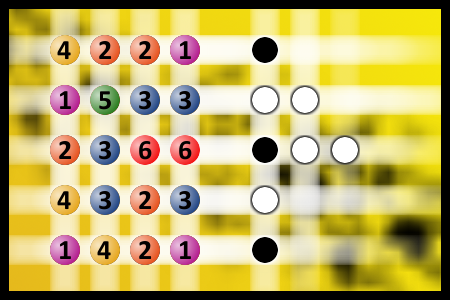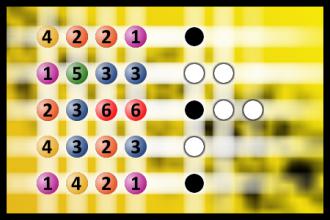Which is a winning combination of digits?
The computer chose a secret code (sequence of 4 digits from 1 to 6). Your goal is to find that code. Black circles indicate the number of hits on the right spot. White circles indicate the number of hits on the wrong spot.
A man walks into a bar and orders a free drink
The man then whispers "I have a 10 inch pianist in my pocket, and he can play a little jig for you. If I can prove that, can I get the drink then?"
The bartender ponders, but then agrees. The man pulls out the pianist, and he plays "The Entertainer" before hopping back in the man's pocket. Baffled, the bartender gives him the promised free drink.
The man whispered "I also have a magic Genie, who was the one that gave me this pianist. If I let him grant you one wish, can I get another free drink?"
The bartender, already in shock over the tiny piano man in his pocket, agrees. The man pulls out a lamp, and out comes a Genie, ready to grant wishes.
The bartender exclaims "I want a million bucks!" And all of a sudden, a million ducks enter the bar.
"Ducks?! I didn't want ducks!" The bartender shouts. The man looks at him, dead in the eyes and says "You think I wanted a 10 inch pianist?"

